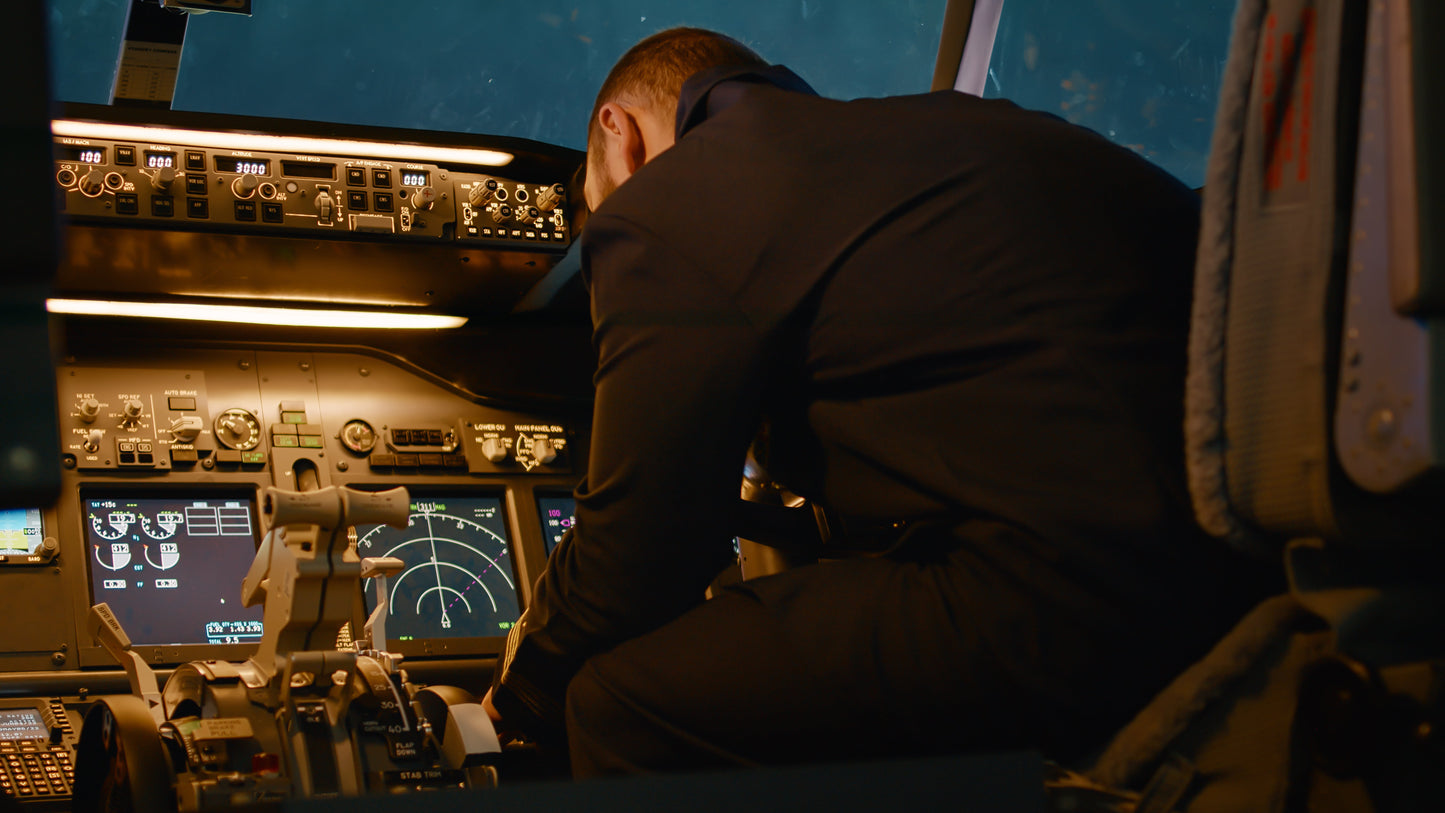
Kore Aviation - Do pilot sleep during flights? Yes, pilots do sleep sometimes but under tight rules and only when duty time, rest schedules and aircraft setup allow it. Sleep for pilots is essential for safety, especially on long haul flights where fatigue risk increases.
In this article you will learn types of pilot rest, regulatory standards, when sleep is allowed and not allowed and also how student pilots can stay alert using tools like aviation headsets.
Regulatory Basis for Pilot Rest
In the United States the Federal Aviation Administration (FAA) sets rules under Part 117 for flight crew rest facilities and duty time. Advisory Circular AC‑117‑1 outlines rest facilities classes, sleep surfaces and how rest periods are scheduled.
International authorities like EASA and ICAO also have rest guidelines. Those ensure that pilots are not expected to operate without adequate rest between flights or during long sectors.
Also learn: Why Do Pilots Wear Headphones? Aviation Essentials Explained
Types of Sleep or Rest for Pilots
1. Controlled Rest In The Cockpit
Pilots sometimes use controlled rest (also called in seat rest) during cruise phases when workload is low. One pilot remains at the controls while the other gets a short rest. Duration is limited to avoid grogginess known as sleep inertia. Typically 10 to 20 minutes are ideal.
2. Bunk Rest Or Crew Rest Facilities
On long haul flights, aircraft often include crew rest compartments or bunk areas separated from passenger areas. These rest compartments may be Class 1, 2 or 3 depending on how much sleep quality, privacy and quiet are provided. Pilots sleep here in shifts so someone remains on duty.
3. Reserve rest before or after duty
Pilots must rest a certain number of hours before reporting for duty or after completing a shift. These rest periods are mandatory to avoid fatigue.
When Is Pilot Sleep Allowed And When Not
- Sleep is not allowed during critical flight phases like takeoff, landing or during high workload situations.
- Rest periods must be planned in advance in the flight schedule with relief crew or augmented crew if required.
- Regulations require that at least one pilot is awake or at the controls always.
- Use of rest depends on aircraft approval for rest facilities and airline policies.
Also read: How to Avoid Ear Pain During Flight? Relief and Prevention Tips
Impact of Sleep On Alertness And Safety
Pilot fatigue is a declared safety hazard. Lack of sleep can impair reaction times, decision making and situational awareness. Using rest practices properly mitigates these risks.
Controlled rest helps refresh alertness but must be short to avoid grogginess. Bunk rest gives deeper rest but requires good facilities. Airlines monitor duty time to prevent fatigue.
Real Flight Crew Practices
- On long haul flights with 3 or more pilots, one may rest in bunk while others fly.
- Controlled rest in cockpit is sometimes used when two‑pilot crews agree during low workload cruise segments.
- Many airlines enforce mandatory rest before and after flights so pilots arrive rested.
Discover More: What Happens If You Don’t Put Your Phone in Airplane Mode?
How Student Pilots Can Understand Pilot Sleep Rules
Even if you are not flying long haul yet it's good to learn rules about pilot rest early. Know that sleep during flight is not informal napping. It is regulated and structured. If you train later for airline or charter work you may fly on aircraft with rest facilities. Knowing rest rules helps you understand what headset and communication gear you will need to stay alert and safe.
For student pilots Kore Aviation has excellent headset guides to help you choose gear that supports training and focus.
FAQs About Do Pilot Sleep During Flights
-
Do pilots sleep in cockpit?
Yes under controlled rest rules. One pilot may rest while the other handles controls but only during low workload flight phases. -
Can both pilots sleep at same time?
No. Safety rules require that one pilot remain active at the controls. -
Are there special beds for pilots?
Yes long haul aircraft often have bunks or crew rest compartments separate from passenger cabin. -
How long can a pilot sleep in flight?
Rest intervals are limited. Controlled rest is often 10‑20 minutes or up to a certain airline policy max like 30 or 45 minutes. -
Why is rest regulated?
To manage fatigue reduce risk of pilot error and ensure alertness during critical flight phases like approach and landing. -
Do rest rules vary by country?
Yes. FAA EASA ICAO each have details that differ in terms of rest needed, facilities required and duty time limits. But core safety principles are aligned. -
Is sleeping allowed on short haul flights?
Not usually. On short or domestic routes critical phases are most of the flight and no rest is permitted in cockpit. -
Do pilots rest before takeoff?
Yes. Rest before duty is mandatory under regulation to ensure they are fit before flight. -
What tools help reduce fatigue besides rest?
Good sleep schedules diet hydration exercise and quality headsets that reduce noise exposure help maintain alertness. -
Are there legal consequences if pilot sleeps when not allowed?
Yes serious safety investigations may result and regulatory bodies impose fines suspensions or other penalties if rules are breached.
Final Thoughts
So to answer do pilot sleep during flights: yes they do under strict conditions and regulated rest arrangements. Rest helps them stay alert, reduce fatigue and perform safely especially on long haul routes.
If you are training now or preparing for any flight duty investing in good gear matters. A high quality headset reduces noise improves communication and helps you stay focused even when rest periods begin or end.
📞 Explore Kore Aviation student pilot headsets now to get reliable comfort and clarity in flight. Quality gear is part of safe pilot rest and performance.

